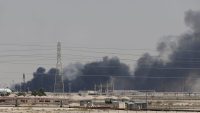With or Without the JCPOA, Iran Will Be a Challenge for Biden
Since last April, the U.S. has been engaged in indirect negotiations with Iran on restoring the 2015 deal limiting Tehran's nuclear program known formally as the Joint Comprehensive Plan of Action, or JCPOA. If these talks succeed, or should they fail, the impact will reverberate across a range of issues beyond the nonproliferation file over which Washington and Tehran are at odds.
When the Trump administration withdrew from the JCPOA in 2018, it laid out 12 demands addressing various aspects of Iranian policy it wanted Tehran to change. Of the concerns it identified, three directly dealt with the nuclear program, and one addressed bilateral issues—namely, the release of U.S.… Seguir leyendo »





